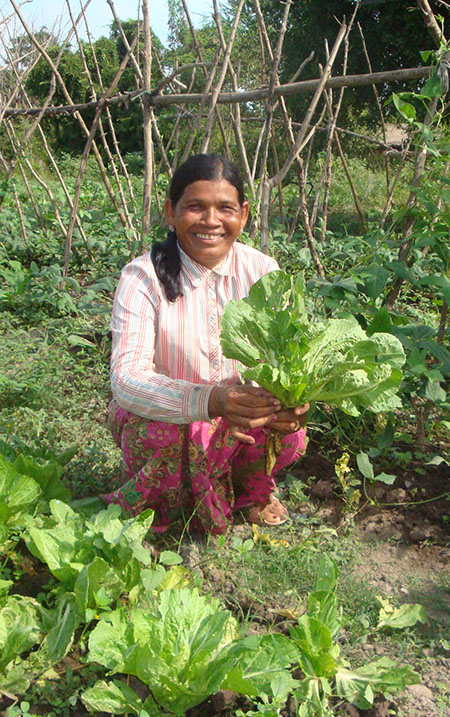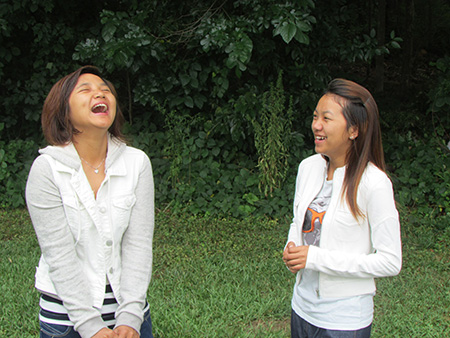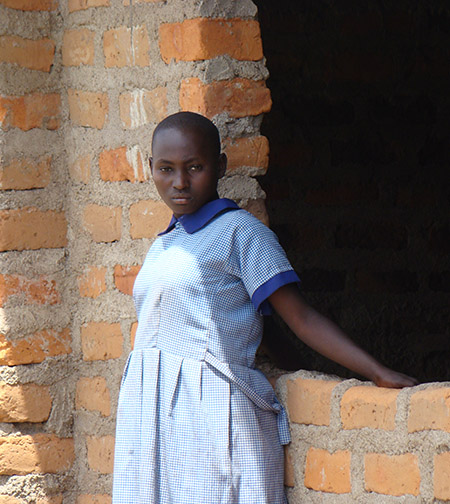Stories of Change

Mrs. Pich Khorn is proud of her vegetable garden. Photo: Sok Touch
If female farmers had the same access to resources as men, the number of the world's hungry in the world could be reduced by up to 150 million.
Source: World Food Programme
How This Mom Saved Her Family from Disaster
Pich Khorn, 53, and her husband, Dom Soy, 54, live in a small house in Slarlak village in western Cambodia. They have two teenage sons, a widowed daughter and an infant grandchild who live with them. Khorn rents land from a neighbor to grow rice for her family’s daily needs.
Floods hit their village in October 2013 and destroyed the family’s rice paddy. Immediately, the disaster forced their oldest son and the daughter to seek work outside Cambodia. Their younger son had to drop out of school to help his parents get by by doing household chores while they went out to earn money as day laborers.
CWS prioritized working with the Khorn and Soy family together with our strong network of partners in the region: Rural Development Association, DanChurchAid and the European Commission’s Humanitarian Aid and Civil Protection department.
In July 2014, Khorn met with CWS recovery team members to decide the most productive way to use a small cash grant. Khorn joined with community members who were also receiving grants and together they brainstormed on how best she could spend the funds. Khorn decided to spend her grant in part for rice and basic food to feed her family. She bought green mustard and string bean seeds and gardening tools to grow the vegetables. Soon, there was food both for the family to eat and also to earn a small income.
After a few months, Khorn combined her vegetable sales earnings and her husband’s day labor wage savings to start a small grocery shop. Soy helps his wife run the store and works in the garden plot and no longer has to go too far from Slarlak for daily wage labor. Khorn is gradually growing her business by responding to requests for products from other villages.
The couple’s success means that both their son and daughter have been able to come home and help run the grocery shop as it keeps expanding. The family no longer worries about food shortages as before. Khorn has gained self-confidence and has become more optimistic about the future and is now active in village matters.
When visiting with CWS team members, Khorn expressed her thanks to everyone involved in helping her and her family recover after the floods. It is a point of pride and hope for the CWS Cambodia team that Khorn had the strength and courage in the face of disaster to organize her family to rebuild and reunite. Now her family is financially secure and more able to withstand future natural disasters in the region, which are inevitably to come.
That is something all CWS supporters can take pride in.
Storyteller: Pich Khorn, Cambodia



